Stuff
We got kicked off the cliffs at 7:30am just when things were getting good when a team from the city came to spray the cliffs with soap to reduce the smell of the pelican roosting cliff … I mentioned to the biologist that since the pelicans leave the cliffs between 10 and 11 am every day in winter that they might schedule the spraying for after 11am. She said, “My boss makes the schedule.” I believe that all of the above is per the order of the San Diego City Council to placate the residents of La Jolla who do not like the alleged smell. To me, the cliffs smelled exactly the same before and after the spraying 🙂 I will say, however, that the sea lion spot stinks really badly.
Anyhoo, we headed down the hill, worked the Brandt’s Cormorants for a while, and then headed down the coast to the low cliffs where we again found the tame Black Oystercatcher and a nice variety of gulls including Heerman’s and California. Then I kissed everyone goodbye 🙂 Ken Cook is joining me early this morning, Friday, January 25, to try for the dancing grebes …
The Higher Answer
In the Two What’s blog post here, the Pacific race Brown Pelican — dorsal view in pre-dawn light image was created with AUTO ISO at 10,000. Please note that I neglected to mention that I was in Shutter Priority mode (S with Nikon, Tv in Canon); the caption has been corrected. Blog regular Guido Bee nailed the ISO question when he wrote: A guess on the ISO, given pre-dawn; I’d go with around 10K, maybe a bit more. Just a guess. Nice shot, regardless. Well done Guido. Guy, right?
IPT Updates
I have room for two folks on the spoonbill boat and still need three or four folks for the Galapagos trip. If you would like to explore the possibilities, please get in touch via e-mail. No reasonable offers will be refused.
- The 2019 Hooptie Deux/Roseate Spoonbill Boat 3 1/2 DAY IPT — FEB 16 thru 19, 2019: $2599.00. Limit: 5 photographers/Openings: 2.
- The New, Expanded 2019 UK Puffins, Gannets, & Red Kites IPT. Thursday June 27 (from EDI) through Tuesday, July 9, 2019 (on the ground; fly home on Wednesday July 10.): $9,999. Limit 10 photographers/Openings: 9. This trip needs four to run. Co-leader: Peter Kes.
- The GALAPAGOS Photo Cruise of a Lifetime IPT/The Complete Galapagos Photographic Experience. July 23 to August 6, 2019 on the boat. 13 FULL and two half-days of photography: $14,499. Limit: 12 photographers/Openings: 4.
BIRDS AS ART
BIRDS AS ART is registered in the U.S. Patent and Trademark Office.
Selling Your Used Photo Gear Through BIRDS AS ART
Selling your used (or like-new) photo gear through the BAA Blog is a great idea. We charge only a 5% commission. One of the more popular used gear for sale sites charged a minimum of 20%. Plus assorted fees! Yikes. They went out of business. And e-Bay fees are now up to 13%. The minimum item price here is $500 (or less for a $25 fee). If you are interested please scroll down here or shoot us an e-mail with the words Items for Sale Info Request cut and pasted into the Subject line :). Stuff that is priced fairly — I offer pricing advice to those who agree to the terms — usually sells in no time flat. Over the past year, we have sold many dozens of items. Do know that prices on some items like the EOS-1D Mark IV, the old Canon 100-400, the old 500mm, the EOS-7D and 7D Mark II and the original 400mm DO lens have been dropping steadily. You can always see the current listings by clicking here or on the Used Photo Gear tab on the orange-yellow menu bar near the top of each blog post page.
Money Saving Reminder
If you need a hot photo item that is out of stock at B&H, would enjoy free overnight shipping, and would like a $50 discount on your first purchase, click here to order and enter the coupon code BIRDSASART at checkout. If you are looking to strike a deal on Canon or Nikon gear (including the big telephotos) or on a multiple item order, contact Steve Elkins via e-mail or on his cell at (479) 381-2592 (Eastern time) and be sure to mention your BIRDSASART coupon code and use it for your online order. Steve currently has several D850s in stock along with a Nikon 600mm f/4 VR. He is taking pre-orders for the new Nikon 500 P and the Nikon Z6 mirrorless camera body.
Gear Questions and Advice
Too many folks attending BAA IPTs and dozens of photographers whom I see in the field and on BPN, are–out of ignorance–using the wrong gear especially when it comes to tripods and more especially, tripod heads… Please know that I am always glad to answer your gear questions via e-mail. Those questions might deal with systems, camera bodies, accessories, and/or lens choices and decisions.
|
|
|
This image was created on the fourth morning of the San Diego IPT, January 24, 2019. I used the hand Nikon AF-S NIKKOR 80-400mm f/4.5-5.6G ED VR lens (at 180mm) and my souped up Nikon D850. ISO 7200. Matrix metering +1 2/3 stops as framed: 1/2000 sec. at f/5.3 in Shutter Priority mode (S with Nikon, Tv in Canon). NATURAL AUTO WB at 7.19am in pre-dawn light (it takes a while for the sun to get over the big hill in La Jolla). Nikon Focus Peaking fine-tune value: +5. See the Nikon AF Fine-tune e-Guide here. Center Group (grp) AF point/Continuous (C in Nikon/AI Servo with Canon) AF was active at the moment of exposure. The array was centered to the left of the pelican’s neck; the rightmost point of the array was on the center of the pelican’s bill. Not ideal, but with Group the eye is razor sharp. Pacific race Brown Pelican — incoming in pre-dawn light/strong |
High
I find that working in TV mode with Auto ISO and the correct exposure compensation (EC) in pre-dawn and dusk light saves a ton of time as compared to working in Manual mode. It allows you to go from creating pleasing blurs at shutter speeds in the 1/4 to 1/60 second range to sharp with shutter speeds in the 1/500 at a minimum to the 1/2000 second range by turning a single dial. I wind up teaching this technique on virtually all IPTs. Whether you are in Manual Mode os an automatic mode like S, you always need to set the correct EC … Shutter Priority mode simply allows you to work much faster. When the sun comes over the hill I turn off AUTO ISO, set the ISO to 400, and get to work with the sweet light.
On Getting Over a Fear of High ISOs …
More and more with both my D850s and my D5 I have been using and loving the higher ISO, those typically ranging from ISO 3200 to as high as ISO 10,000 and even higher on occasion. What has brought about this change? #1 would simply be trying the higher ISO. #2 is the amazing NeatImage (NI) noise reduction software. For both the ISO 7000 image in today’s blog post and the ISO 10,000 image mentioned above, I ran quick and dirty noise reduction on a Layer with varying Y values. With today’s image, I added a Regular Layer Mask and painted away the NR on the bird’s face only at 50%. To learn the quick and dirty noise NI reduction techniques see Digital Basics II here. To learn the much more sophisticated NI NR techniques that allow you to apply more NR to the backgrounds and less NR to the subject, see the two Professional Post Processing Guides here.
Important note: the original Professional Photographers’ Guide to Post Processing was based on NeatImage v7.6. Late in 2016, NeatImage released a new version, v8.2, that is a bit more complicated than v7.6. I continue to use v7.6 which is simpler and easier to use. Arash switched to the newer version, v8.2, and we worked together to create a second guide based on v8.2. As far as the quality of the results, v7.6 and v8.2 are indistinguishable.
New purchasers need to decide if they want to purchase the Pro Version of NeatImage v7.6 or the Pro Version of NeatImage v8.2. Once you have decided, click here to purchase the The Professional Post Processing Guide Based on NeatImage v7.6. Or click here to purchase the The Professional Post Processing Guide Based on NeatImage v8.2
|
|
|
This image was created on the third morning of the San Diego IPT, January 23, 2019. I used the hand Nikon AF-S NIKKOR 80-400mm f/4.5-5.6G ED VR lens (at 180mm) and my souped up Nikon D850. ISO 400. Matrix metering at about zero as framed: 1/4000 sec. at f/7.1 in Manual Mode. NATURAL AUTO WB at 9:40am on a dead-clear day. Nikon Focus Peaking fine-tune value: +5. See the Nikon AF Fine-tune e-Guide here. Center Group (grp) AF point/Continuous (C in Nikon/AI Servo with Canon) AF was active at the moment of exposure. The rightmost and bottom AF points just caught the base of the near wing yet the image is sharp on the eye. Western Gull (baited) starting to dive |
The Low ISO
Once the sun is out at full strength, there is generally only one ISO for me: ISO 400. Even when using the 500 PF with the 1.4X teleconverter I have more than enough light to work at f/9 with fast enough shutter speeds to create sharp images. It is only very, very, very rarely that I will switch to ISO 200 or 100 or lower when the sun is out. I see no difference in the noise at ISO 400, ISO 200, and ISO 100 …
A Really Bright Exposure
Regular readers know that my suggested starting point for bright WHITE/ISO 400 images made in full sun is 1/2500 second at f/8 (which is the same as 1/3200 second at f/7.1 or 1/4000 second at f//6.3). The exposure for today’s Western Gull image was 1/4000 sec. at f/7.1, one-third stop (one click) darker than the suggest book value. Why? With the super-bright California light I was getting significant blinkies on the bird’s breast at 1/3200 second at f/7.1.
Your Favorite
Which of todays’ featured images is your favorite? Please let us know why. Folks have been very lazy recently 🙂
|
|
|
Fort DeSoto in spring is rife with tame birds, many in full breeding plumage. Click on the composite to enjoy a larger version. Clockwise from upper left around to center: Laughing Gull landing on head of Brown Pelican, Laughing Gull in flight, Reddish Egret sunrise silhouette, Great Blue Heron with needlefish, Yellow-crowned Night Heron with ghost crab, Roseate Spoonbill, Sanderling in breeding plumage, and white morph Reddish Egret in glorious breeding plumage. |
The 2019 Fort DeSoto Spring IPT/THURS 18 APRIL through the morning session on SUNDAY APRIL 21, 2019: 3 1/2 DAYS: $1549. Limit 8/Openings: 5. Meet and greet at 7PM on the evening of WED 17 APRIL.
Fort DeSoto, located just south of St. Petersburg, FL, is a mecca for a great variety of migrant shorebirds, gulls, terns, and passerines in Spring. Many of the gulls and terns will be courting and copulating. There the migrants join hundreds of Florida resident egrets, herons, night-herons, and pelicans on the T-shaped peninsula. We should get to photograph one of Florida’s most desirable shorebird species: Marbled Godwit. Black-bellied Plover and Willet are easy, American Oystercatcher almost guaranteed. Great Egret, Snowy Egret, Great Blue Heron, Tricolored Heron, and White Ibis are easy as well and many of those will be in their spectacular breeding plumages. Yellow-crowned Night-Heron is a strong possibility. We may get to see and photograph the amazing heron/egret hybrid that has been present for three years. And we should enjoy some great Brown Pelican flight photography. In addition, Royal, Sandwich, Forster’s, and Caspian Terns will likely provide us with some good flight opportunities as well. Though not guaranteed, Roseate Spoonbill and Wood Stork might well be expected. And we will be on the lookout for a migrant passerine fallout in the event of a thunderstorm or two. Yikes, I almost forgot to mention that nearly all of the birds are ridiculously tame!
|
|
|
Yes, Fort DeSoto in spring is rife with tame birds, most in breeding plumage. Click on the composite to enjoy a larger version. Clockwise from upper left around to center: breeding plumage Dunlin, dark morph Reddish Egret displaying, Laughing Gull vertical front-end portrait, Laughing Gull with prey item, landing on head of Brown Pelican, breeding plumage Royal Tern displaying, Royal Terns — pre-copulatory stance, Laughing Gulls copulating, Laughing Gull head portrait, breeding plumage Sandwich Tern with fish, and a rare treat, a breeding plumage White-rumped Sandpiper. |
Just some of the stuff you will learn …
On the IPT you will learn basics and fine points of digital exposure and to get the right exposure every time after making a single test exposure, how to approach free and wild birds without disturbing them, to understand and predict bird behavior, to identify many species of shorebirds, to spot the good situations, to choose the best perspective, to see and understand the light, and to design pleasing images by mastering your camera’s AF system. Most importantly you will surely learn to evaluate wind and sky conditions and understand how they affect bird photography. And you will learn how and why to work in Manual mode (even if you’re scared of it).
|
|
|
Again, Fort DeSoto in spring is rife with tame birds, most in breeding plumage. Click on the composite to enjoy a larger version. Clockwise from upper left around to center: Laughing Gull in flight, Yellow-crowned Night-Heron, Sandwich Terns copulating, Roseate Spoonbill, Great Egret with reflection, breeding plumage Short-billed Dowitcher, American Oystercatcher, Royal Tern, white morph Reddish Egret, and Snowy Egret in marsh. |
What we do
There will be seven shooting sessions in all: four 3+ hours morning session and three 2 1/2 hour afternoon sessions. There will be a Photoshop/image review session during or after lunch (lunch is included) on each of the three full days. That will be followed by Instructor Nap Time.
The best airport is Tampa (TPA). Once you register, you will receive an e-mail with the hotel/lodging information.
|
|
|
You got it, Fort DeSoto in spring is rife with tame birds, most in breeding plumage. Click on the composite to enjoy a larger version. Clockwise from upper left around to center: Roseate Spoonbill, immature Brown Pelican in flight, the heron/egret hybrid, American Oystercatcher feeding, immature Royal Tern on railing, Great Egret morning silhouette, Black Skimmer in surf, and underside head portrait of Great Blue Heron. |
Signing Up
A $500 deposit is due when you sign up and is payable by credit card. Balances must be paid by check after you register. Your deposit is non-refundable unless the IPT sells out with eight folks so please check your plans carefully before committing. You can register by calling Jim or Jennifer during weekday business hours at 863-692-0906 with a credit card in hand or by sending a check as follows: make the check out to: BIRDS AS ART and send it via US mail here: BIRDS AS ART, PO BOX 7245, Indian Lake Estates, FL 33855. You will receive a confirmation e-mail with detailed instructions, clothing, and gear advice. Please remember that the meet and greet will take place on the evening of WED 17 APRIL. Please shoot me an e-mail if you plan to register or if you have any questions.
|
Folks attending this IPT will be out in the field early and stay late to take advantage of sunrise and sunset colors. Click on the composite to enjoy a larger version. Clockwise from upper left to center: Long-billed Curlew, juvenile Tricolored Heron, Marbled Godwits, Great Blue Heron, juvenile Pectoral Sandpiper, Wood Stork, smiling Sea Scallop, Ruddy Turnstone scavenging needlefish, Great Blue Heron sunset silhouette at my secret spot, and southbound migrant tern flock blur. |
Early and Late
Getting up early and staying out late is pretty much a staple on all BIRDS AS ART Instructional Photo-Tours; on this particular trip we will get lots of sleep as the days are short. Being in the field well before the sun comes up and staying out until sunset will often present unique photographic opportunities, opportunities that will be missed by those who need their beauty rest. I really love it when I am leaving the beach on a sunny morning after a great session just as a carful or two of well-rested photographers arrive.
Help Support the Blog
Please help support my efforts here on the blog by remembering to click on the logo link above each time that you shop Amazon. That would be greatly appreciated. There is no problem using your Prime account; just click on the link and log into your Prime account. With love, artie
If In Doubt …
If in doubt about using the BAA B&H affiliate link correctly, you can always start your search by clicking here. Please note that the tracking is invisible. Web orders only. Please, however, remember to shoot me your receipt via e-mail.




Please Remember to use my Affiliate Links and to Visit the New BAA Online Store 🙂
To show your appreciation for my continuing efforts here, we ask, as always, that you get in the habit of using my B&H affiliate links on the right side of the blog for all of your photo and electronics purchases. Please check the availability of all photographic accessories in the New BIRDS AS ART Online Store, especially the Mongoose M3.6 tripod head, Wimberley lens plates, Delkin flash cards and accessories, and LensCoat stuff.
As always, we sell only what I have used, have tested, and can depend on. We will not sell you junk. We know what you need to make creating great images easy and fun. And please remember that I am always glad to answer your gear questions via e-mail.
I would of course appreciate your using our B&H affiliate links for all of your major gear, video, and electronic purchases. For the photographic stuff mentioned in the paragraph above, and for everything else in the new store, we, meaning BAA, would of course greatly appreciate your business. Here is a huge thank you to the many who have been using our links on a regular basis and those who will be visiting the New BIRDS AS ART Online Store as well.
Be sure to like and follow BAA on Facebook by clicking on the logo link upper right. Tanks a stack.
Typos
In all blog posts and Bulletins, feel free to e-mail or to leave a comment regarding any typos or errors. Just be right :).

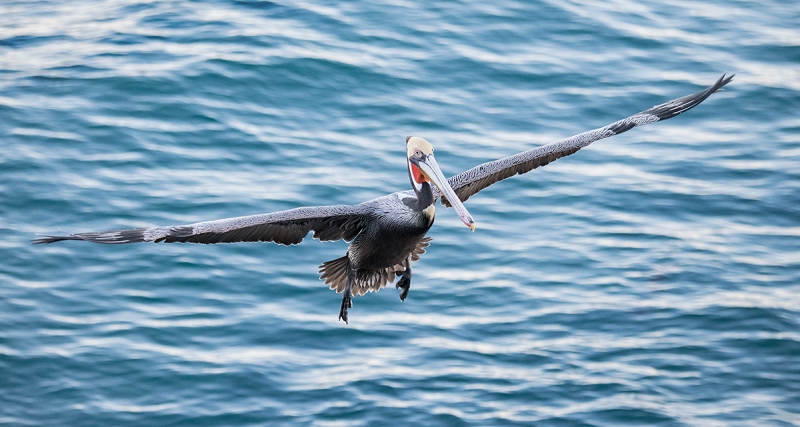
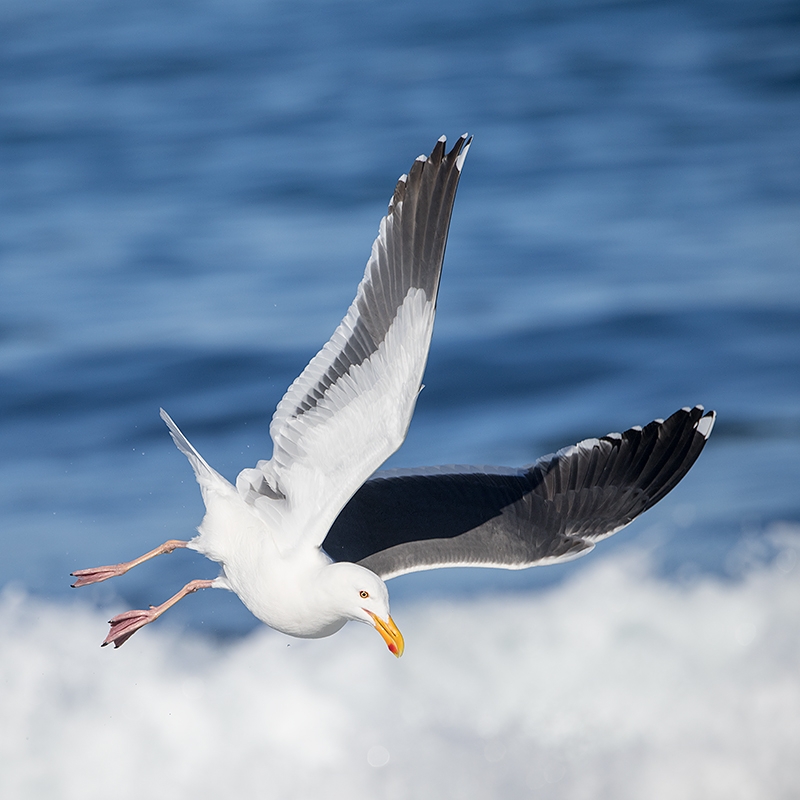
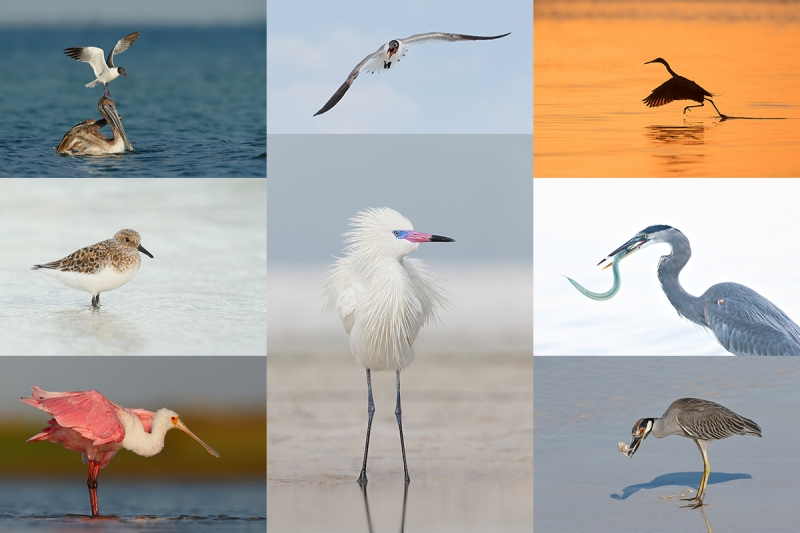
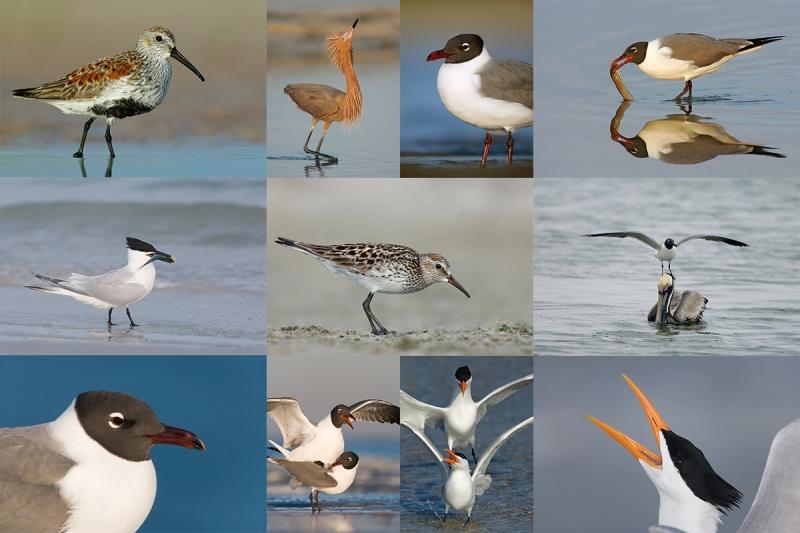
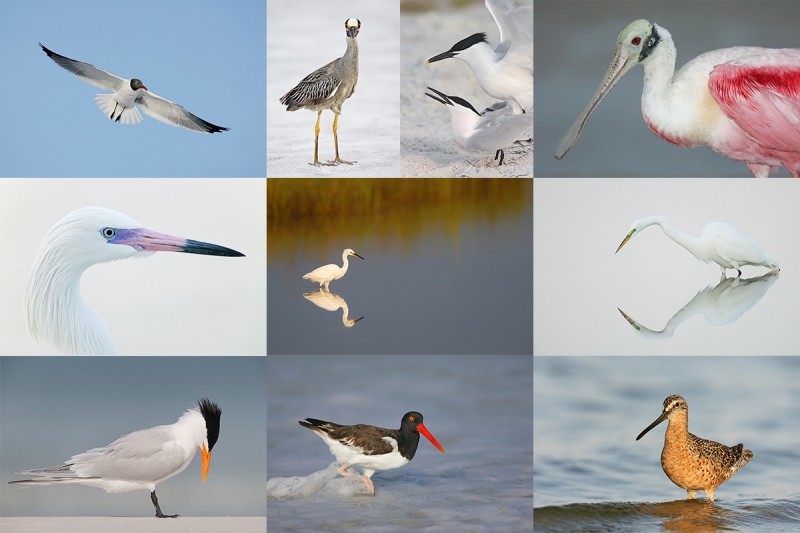
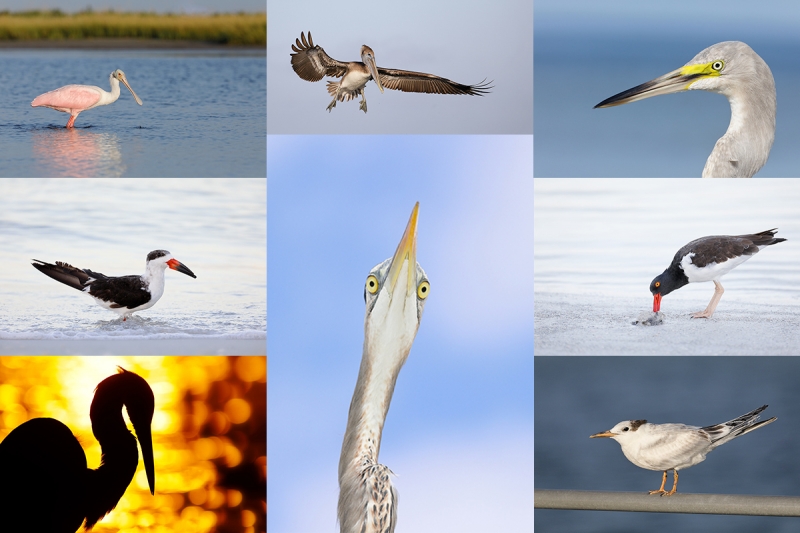














I’m going with the pelican. Might be because I see lots of gulls here around Puget Sound and Hood Canal. I like the feather detail on the shoulders on the pelican. Always impressed by your exposure (or post processing, either way, it works well) technique. I am still refining my exposure methodology. All the best, and Guido Bee is Guy, so you are correct. Be well.
Thanks Guy, Yes, the look of an image is determined by both the capture exposure and the post processing. As always, I am looking to get some data in the rightmost histogram box by working in Manual mode (most of the time).
with love, artie
ps: you should think about the San Diego IPT next year!
I love the gull!
Artie – do you use Auto ISO often?
Hi CJ,
I use Auto ISO when working in an automatic exposure mode, usually shutter priority. Then I can go from a slow shutter speed for making pleasing blurs to a fast shutter speed by turning only one dial (as long as I enter the correct EC).
with love, artie
The gull, without question. The grey wings of the pelican are somewhat lost in the colour of the sea.